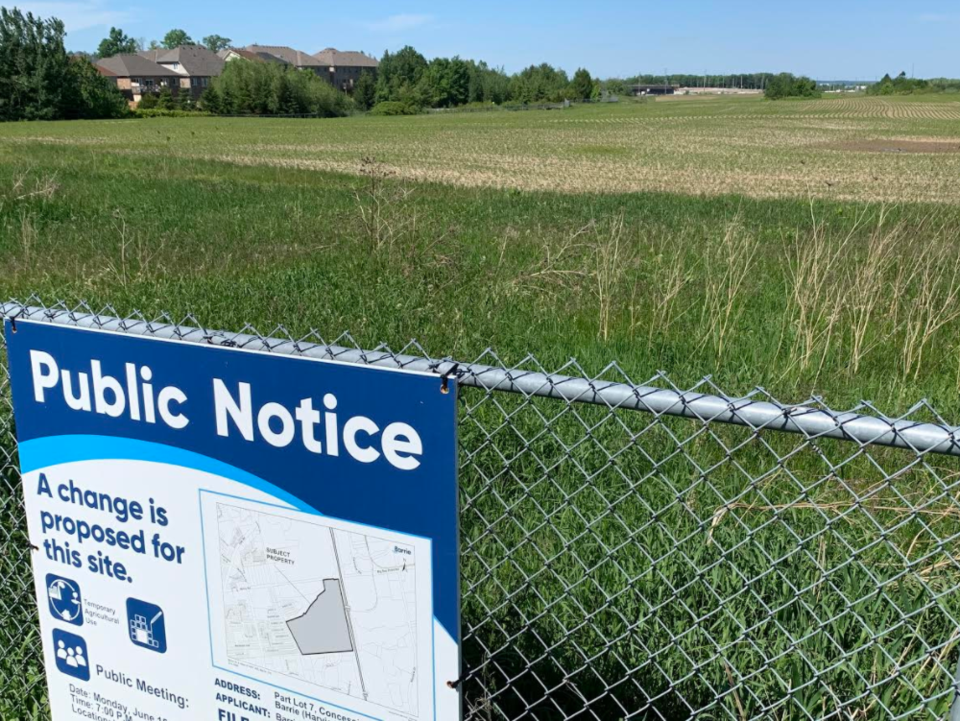The following is a guest column by John Challis on behalf of Canadians for a Sustainable Society.
********************
Every day in Ontario, we lose 175 acres of farmland to urban development.
With arable land making up just five per cent of the total landmass, there is no room for further losses. The Ontario Federation of Agriculture is campaigning to try to preserve what is left of the province’s farm industry.
Farming directly employs about 28,000 people in Ontario and another 214,000 people are indirectly employed in Ontario food production. In 2015 the agriculture sector produced $11.5 billion in food products. The Economics Research Institute says Ontario’s crop farmers average $33 an hour. It’s an impressive part of the economy, but not sufficient to be a priority in the minds of Ontario’s politicians.
Compare that to the development industry.
The Ontario Municipal Property Assessment Corporation reported new property construction and property improvements were worth more than $38 billion last year. In the first half of 2021 in the Greater Toronto Area alone, commercial real-estate transactions hit $13.2 billion. Salaries (running $20 to $27 an hour, depending on the source) make up only a third of the value of construction. Clearly, the real money ends up in the pockets of those who own the development firms. And hefty political donations routinely earn those wealthy few access into the back rooms at Queen’s Park.
Hypnotized by dollars, government has aligned itself with those who benefit from economic growth. Meanwhile, the public is making it clear there are higher priorities — notably, the preservation of farmland.
The demand for food grown and raised in Ontario is booming. It’s more than visiting the farmers’ market; it’s a mainstream demand from the consumer. Simcoe Farm Fresh is an alliance not just of farmers but of restaurants, health advocates and tourism promoters. Muskoka only has a few pockets of good soil, yet Savour Muskoka thrives. Sustain Ontario, the “alliance for healthy food and farming,” has dozens of similar programs across the province. Food basket programs have been burgeoning across the province, providing healthful, locally grown food choices to people who may not have them near their homes.
The Simcoe Muskoka District Health Unit encourages locally grown food because it can improve population health.
“Access to a safe, dependable and affordable supply of healthy food improves individual and community health and reduces the risk of many chronic diseases,” the health unit’s website states.
A report for the Greenbelt Foundation estimates half of the $20 billion in food Ontario imports could be produced locally. Ontario has some of the richest farm soils in Canada. At one time in the late 1800s, Ontario produced more wheat than the prairie provinces. Orchards produced the majority of Canada’s apples. Before it became a wine-producing mecca, Niagara had fruit and vegetable farms supplying major food processors for the North American market.
So much of that potential has been lost as our deep, fertile soil disappears beneath asphalt and bricks and mortar.
The trend has been continuing unabated since the 1950s, but has aggressively accelerated these days. You’re likely aware of the record number of ministerial zoning orders that have been pushed through by the current government to allow land to be turned into development. Green spaces along the Highway 400 corridor are rapidly vanishing. Government policy is seeking ways to increase population growth to feed the rapacious appetite of the development industry.
Given the money being paid for land, it’s easy to see why many farmers have simply thrown in the towel, sold their property and retired. We need to find ways to make farming lucrative again; it’s vital to our health, and the well-being of the province. If we lose Ontario-grown food, we lose jobs and we put ourselves at the mercy of other countries’ food supplies. Food security is the foundation of all our security.
As for governments, if they are honest about their commitments to sustainability, they will have to stop destroying farmland for urban expansion. You can’t bring farms back once they’ve been paved.
Have a look at sustainontario.com to get an idea of the scope of the local food movement. And then visit homegrown.ofa.on.ca, the website of the Ontario Federation of Agriculture, to gain an understanding of the threat Ontario’s farmers face today. In Orillia, you can look up Stop Sprawl Orillia to see what it is doing locally to stand up to indiscriminate growth.
John Challis is a writer and editor living in Washago. He has produced this article on behalf of Canadians for a Sustainable Society, a non-profit organization.
